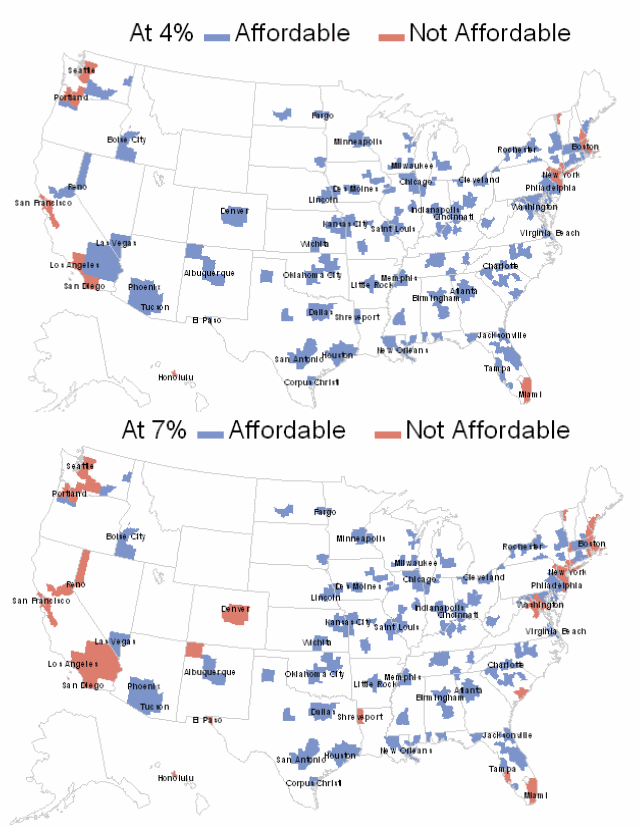Blog

Freddie Mac Green Lights Fed Tapering
Mortgage rates have risen sharply overrnthe last month and Freddie Mac, in its monthly Economic andrnHousing Market Outlook for June, focuses on what happens to thernhousing market recovery if those increases continue. Recentrnmovements have raised rates from the 3.5 percent range where theyrnhave been for most of 2013 to just over 4.0 percent. </p
While many market participants are concerned about the impact of higher rates on the economy and the chance that Fed tapering could take them higher, Freddie’s research suggests moderately higher rates are livable, even if they have some downside risks. Whether intentional or not, the tacit implication is that the economy may well be able to endure QE3 tapering.</p
Accordingrnto Freddie Mac’s Office of the Chief Economist, low rates have helpedrnfuel the recent good news in housing where home prices have beenrnrising in most areas of the country. While it is true, the reportrnsays, that prices and rates work together to drive up the cost ofrnbuying homes, rates remain at near 60-year lows. At today’s homernprices and income levels, mortgage rates would have to reach 7rnpercent before the median priced home would be unaffordable tornfamilies making the median income in most parts of the country. </p
However Freddie Macrnsays, in some areas of the country affordable homes are already outrnof reach of a typical family. It cites Los Angeles as an area wherernfamilies are already falling short at 4 percent interest rates andrnRiverside, Denver, and Washington DC as metro areas where 5 percentrnrates would leave a lot of typical families on the wrong side ofrnaffordability.</p
Certain high costrnareas aside, most parts of the country have high affordability andrncan absorb a further increase in rates before housing activity shouldrnslow substantially. Rather rising rates will have only a small,rnslowing effect on the home purchase market. The capital markets arernsignaling that rates are likely to move gradually higher in therncoming year and this may spur renters and other first-time homebuyersrnwith the financial capacity to get off the fence and buy before costsrnrise higher.</p
However, therneconomists say we can expect refinancing to fall quickly and sharply.rn The Bureau of Economic Analysis reports that in the first quarterrnthe average effective interest rate on mortgages was 4.7 percent,rnless than one percentage point above Freddie Mac’s 30-year fixed-raternmortgage in June. History shows that a gap of 0.5 percentage pointsrnimplies a refinance share of about 50 percent. HARP will keeprnlevels a bit higher than historical averages but refinancing willrnstill fall.</p
Freddie Macrnprojects that rising interest rates could have the following effectrnon the affordability of Top 30 U.S. Metro Markets.</p

All Content Copyright © 2003 – 2009 Brown House Media, Inc. All Rights Reserved.nReproduction in any form without permission of MortgageNewsDaily.com is prohibited.
Latest Articles
By John Gittelsohn August 24, 2020, 4:00 AM PDT Some of the largest real estate investors are walking away from Read More...
Late-Stage Delinquencies are SurgingAug 21 2020, 11:59AM Like the report from Black Knight earlier today, the second quarter National Delinquency Survey from the Read More...
Published by the Federal Reserve Bank of San FranciscoIt was recently published by the Federal Reserve Bank of San Francisco, which is about as official as you can Read More...

Comments
Leave a Comment